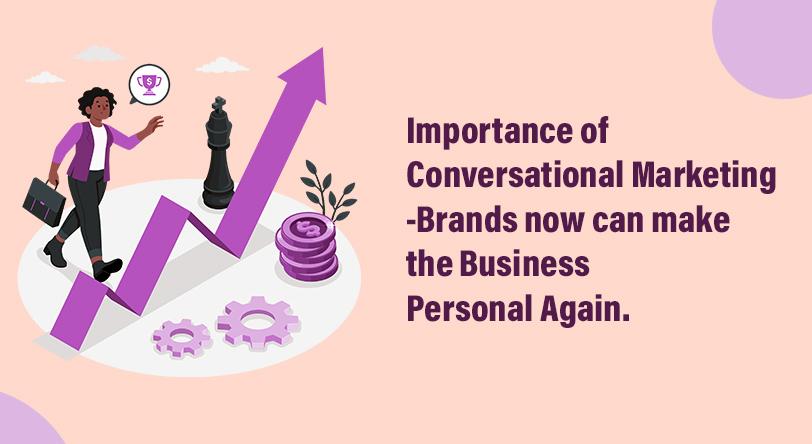
Importance of Conversational Marketing: Brands now can make the Business Personal Again
A brand needs engagement with customers to succeed. In the past, businesses would get input from personal conversations with customers. Today, technology has enabled businesses to reach out to customers easily. However, a one-way communication exercise may not be fruitful. What is needed is a conversation or a two-way dialogue, which is what conversational marketing offers.
What is conversational marketing?
Conversational marketing is one-to-one marketing rather than one-to-many. Rather than talk to an audience, conversational marketing involves having a personal conversation with a customer. The personalized approach helps create a strong relationship with the customer. Such a conversation can help get a better insight into the customer and their preferences. Such a conversation should offer value to the customer. The objective is to make business personal once again.
What conversational marketing is not?
Before getting into the details of conversational marketing, it is important to know what it is NOT.
-
Conversational marketing is not a way to bring traffic to your website. It is a method to leverage the already existing traffic and get the best results from it.
-
It is not about creating a new form for visitors to fill in. Forms are unlikely to get a great response and are not the right way to initiate conversations. Conversational marketing involves having a dialog with a real person not sending information over a form.
How does conversational marketing work?
There are different ways in which a brand can use conversational marketing. A key thing to note is that the website remains the first point of contact for most customers. Many customers are likely to visit the website from a Google search page or on clicking a link. The moment they enter the website, they need to be welcomed.
Their experience becomes impersonal when they see an automated popup or a static webpage. Brands have an opportunity to initiate a dialogue with the customer at this stage. So, how can this be done?
Using AI chatbots
A chatbot is a piece of code written using AI or Artificial Technology. The chat initiated with the customer would feel like a chat with a real person. Thanks to advances in technology, smart AI bots can facilitate conversations. However, an AI bot cannot carry out a full-fledged conversation but only initiates it. The next level dialogue would have to take place with a real person.
Once you establish initial contact, a human needs to step in and continue the conversation. If this does not happen, the customer may leave looking for some other place to find a solution for their needs.
Why use conversational marketing?
There are multiple benefits brands can get from conversational marketing. Here are a few of them:
It allows a brand to be able to have conversations with customers at any time without having to wait for office hours. The AI bot can initiate the conversation during non-working hours and a human can continue engagement later. This offers convenience for customers.
Some customers don’t like filling forms or replying to emails. A direct conversation makes it easy to engage with them. People who don’t like sharing their contact details in forms are more likely to share them over chat.
Micro-conversations are possible where a quick engagement takes place providing crisp and concise information to customers.
Conversations allow brands to take the buyer’s journey forward to the final destination of making a purchase.
It allows customers to get instant solutions to their problems and to find support whenever they need it.
Principles of Conversational Marketing
While implementing conversational marketing, there are a few principles to keep in mind.
Have a strategy: A strategy should be prepared before implementation. The strategy should assess different ways in which customers can engage with you. This will allow you to work out how to have a personal conversation.
Create a personalized experience: A real conversation with a genuine person allows the brand to create a personalized experience.
Real-time response: Studies have shown that contacting a customer within 5 minutes of their inquiry can increase the chances of conversation a hundred times. Using bots to immediately engage with customers is a real-time response that can help in conversions.
Make improvements: It is important to monitor the working of the bot. This will help in finding out areas where the bot could not help the customer, so improvements can be made.
Implementing conversational marketing
Here’s how your brand can start implementing conversational marketing.
The brand must map the buyer’s journey from awareness to decision making. Each stage should have specific content in place.
Creating user stories can help. These user stories will help in the process of conversation.
Role-playing can help before actually going ahead.
Triggers for the AI bot need to be defined that would redirect to a real person.
Getting feedback on the chat experience is essential as it provides input for improvement.
The success of the conversational marketing strategy needs to be reviewed. Identifying, which responses led to a better interaction will help in improvement.
Make your business personal again by using conversational marketing. Choose a chat platform and get started from today.

